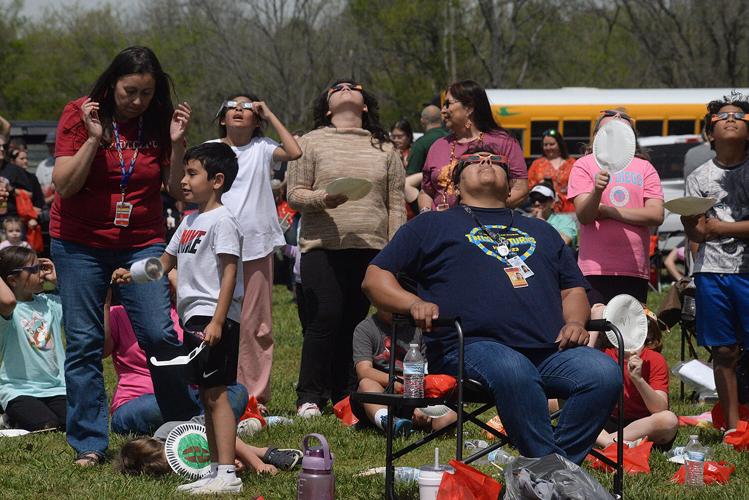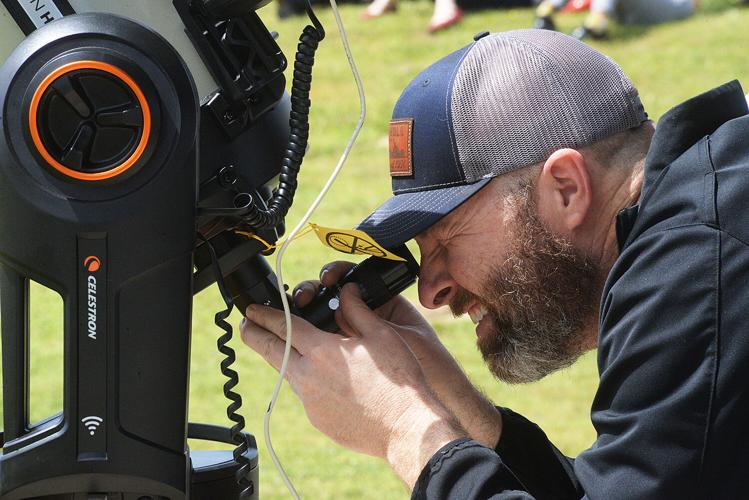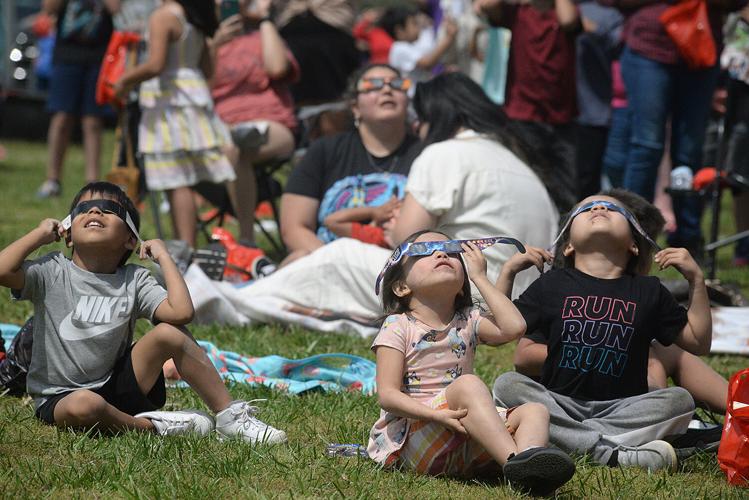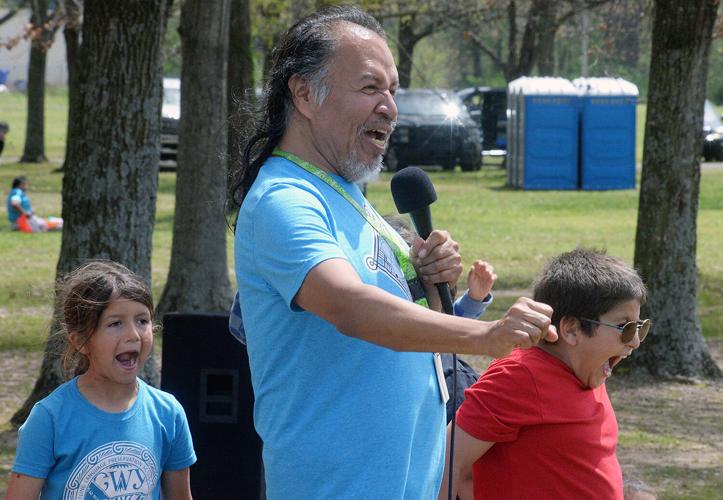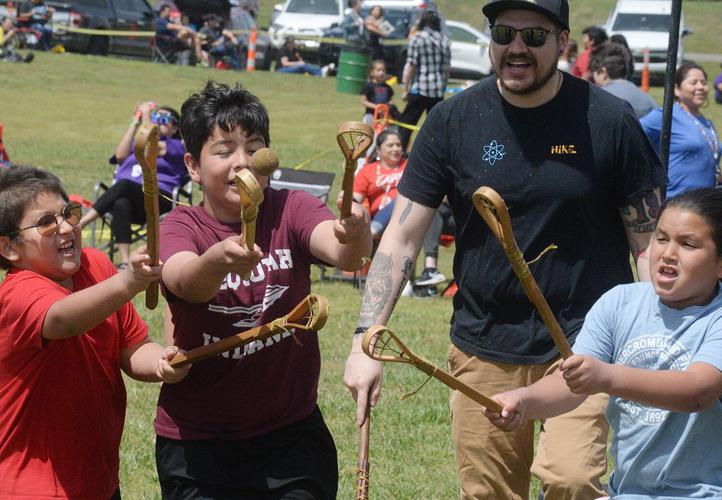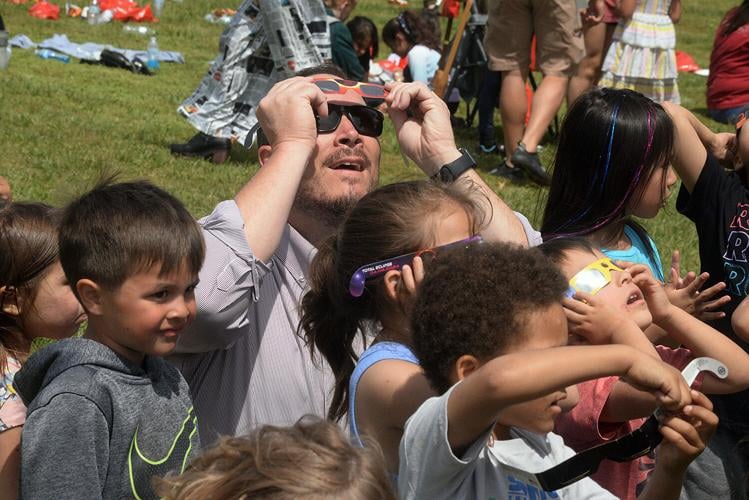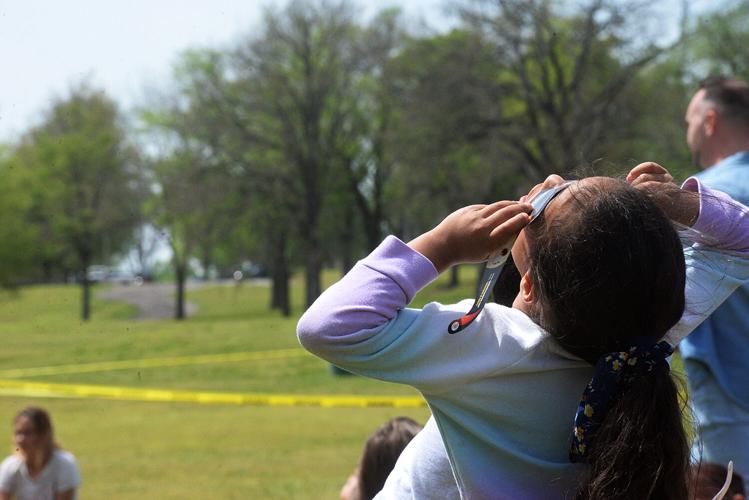TAHLEQUAH – As the afternoon sky darkened April 8 during a solar eclipse, Cherokees gathered at One Fire Field in Tahlequah to celebrate the rare event.
“Today is basically our big event to not just celebrate a celestial happening with the solar eclipse, but to come, to fellowship with one another, to pull in those Cherokee traditions,” Cherokee Nation Deputy Chief Bryan Warner said.
The total solar eclipse crossed North America, passing over Mexico, the United States and Canada. According to NASA, a total solar eclipse happens when the moon passes between the sun and earth, blocking the face of the sun and causing a darkened sky as if it were dawn or dusk. A total of 15 states including Oklahoma were in the eclipse’s path of visibility. In Tahlequah where the Cherokee Nation is headquartered, the eclipse was not total, but estimated to be 97.5%, according to the website eclipse2024.org.
CN employees, Cherokee students and others attended the tribe’s educational event, which featured music, themed snacks, traditional games like stickball and storytelling. Robert Lewis, a Cherokee storyteller, National Treasure and cultural community specialist, told the eclipse-centered tale of the great frog, as cited by ethnographer James Mooney in turn-of-the-century work published by the U.S. Bureau of American Ethnology. According to lore, when the sun or moon is eclipsed, “it is because a great frog up in the sky is trying to swallow it,” according to Mooney’s book “Myths of the Cherokee,” first published in 1902.
“So, the story is that people came out with rifles and firearms and began to shoot into the sky,” Lewis said. “People came out with pots and pans and began to rattle them and scream and yell and try to scare the frog away. Eventually the frog leaves.”
With homemade rattles in hand, children attending April 8’s eclipse event were encouraged to make enough noise to scare the great frog away.
“Now everybody out there, rattle,” Lewis told them while playing out the story. “That rattling sound, for me if I was a frog, I’d hear that and think it’d be a rattlesnake … and try to get away from it. So, you all saved the sun once again.”
Lewis, who is also of Navajo and Apache descent, left before the eclipse.
“Navajos and Apache believe this is a sacred event … cosmic forces are happening,” he said. “They’re actually not supposed to be out here. So, I’ll be here for a little bit at the beginning of this and then I’m going to go back – out of respect for my Navajo culture – go back and stay inside the building until after this is over.”
Cherokee Nation leaders hoped to celebrate the eclipse in the spirit of gadugi, a Cherokee word that describes the value of working together for the common good.
“Gadugi is kind of the first tenet on our Cherokee community values,” Warner said. “Here we are working together, taking some of that time to fellowship, to come in, to educate. But the main thing is during that time of education is that socialization aspect, and what better place to do it than an outdoor classroom, if you will. What we want to do today is reach back in time, remember what our ancestors taught us, know where we’re at today and how can we go there to the future together to make sure those next generations are safe, secure and have opportunity.”
CN Education Services purchased a telescope with a special filter to watch the eclipse directly during the two-hour event, which began under windy conditions, but ended calm.
The last total solar eclipse visible in the United States was in 2017. The next will take place in 2044, according to NASA.


